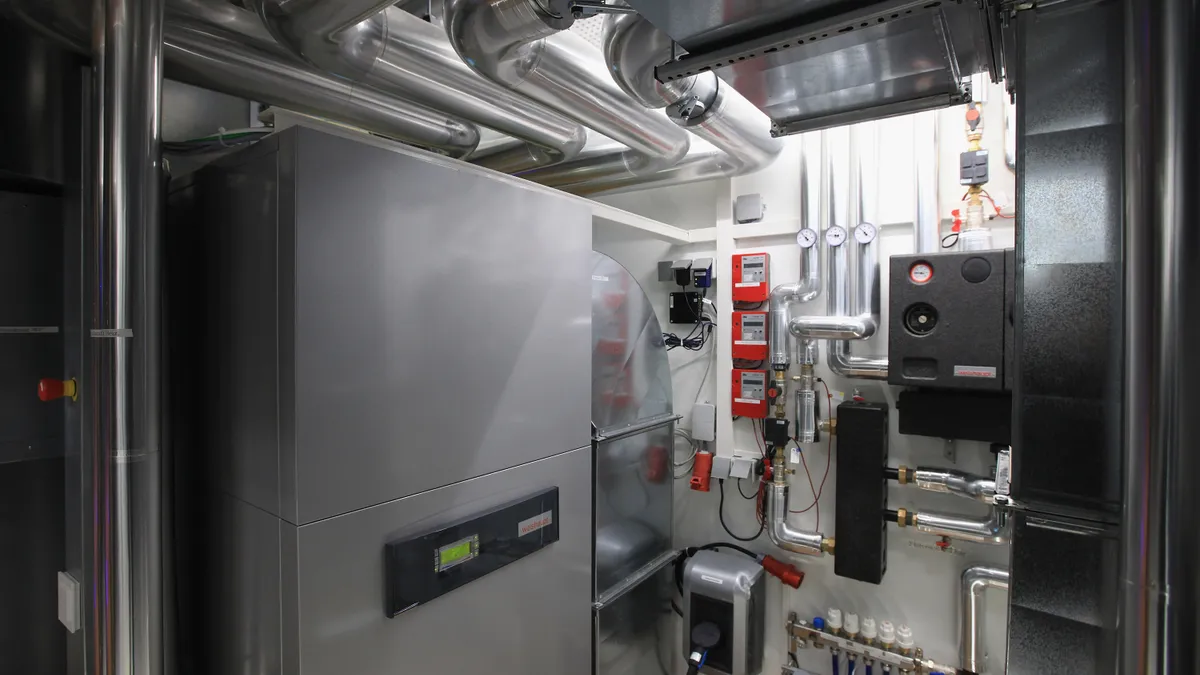Dive Brief:
- The U.S. National Renewable Energy Laboratory updated its REopt web tool to help commercial building owners and energy managers evaluate the costs of hybrid geothermal heat pump projects more effectively.
- With the tool, facilities managers can look at how to integrate hybrid heat exchange into GHP projects through auxiliary heat exchange units to cut capital costs and boost the economic feasibility of retrofit projects.
- REopt can identify an optimal mix of GHP technologies, renewable energy, conventional generation and energy storage to meet cost savings, clean energy and resilience goals, NREL said in a Sept. 26 release.
Dive Insight:
Geothermal heat pumps use underground temperature as a thermal reservoir to enable efficient heating and cooling. Due to their ability to heat and cool buildings with minimal emissions, they are gaining focus, popularity and financial support across the U.S.
While GHP projects can improve building efficiency and reduce related carbon emissions, they often require renovations to existing heating and cooling systems, NREL said in the release. The resulting challenges of justifying the cost of a retrofit prompted the laboratory to introduce another GHP configuration option to REopt. This enhancement aims to help users identify cost-effective solutions for GHP retrofits, the U.S. Department of Energy laboratory said.
To demonstrate the benefits of hybrid geothermal heat exchange, the laboratory conducted a case study comparing nonhybrid GHP systems to a hybrid GHX system in a large office building, spanning 498,588 square feet, in Las Vegas. The analysis considered electricity costs of $0.10 kWh, $10 per kilowatt monthly demand charges and natural gas costs of $10 per one million British thermal units. The findings revealed significant cost savings and improved performance when using the hybrid GHX system, NREL said. The hybrid GHX system also required only 56 boreholes and an auxiliary cooling tower with a capacity of 245 tons, compared with 310 boreholes with a depth of 400 feet for the nonhybrid system, NREL said.
NREL also found that the capital expenditure for the nonhybrid system was $3.18 million before incentives, compared with $1.88 million for the hybrid GHX system. After including federal tax incentives, the hybrid system cost only $960,000, compared with $1.63 million for the traditional, nonhybrid system.
Facilities owners and operators can now run a similar analyses of their sites using the REopt web tool and basic information such as system size, intended use and current energy costs to identify optimally sized heating and cooling solutions.
"More options present more opportunity to discover greater benefits and economic viability. Hybrid geothermal heat exchange systems include a supplemental device connected to the ground loop, either a cooling tower or small boiler, that can reduce the size, and therefore costs of the GHX. It's a configuration option that REopt users can examine when considering the costs and benefits of a GHP retrofit,” Dan Olis, a mechanical engineer at NREL, said in the release.
The geothermal heat exchange and hybrid GHX capabilities added to REopt were funded by the DOE’s Geothermal Technologies Office and developed in partnership with Thermal Energy Systems Specialists, NREL said. The Federal Energy Management Program funded the existing REopt model.














